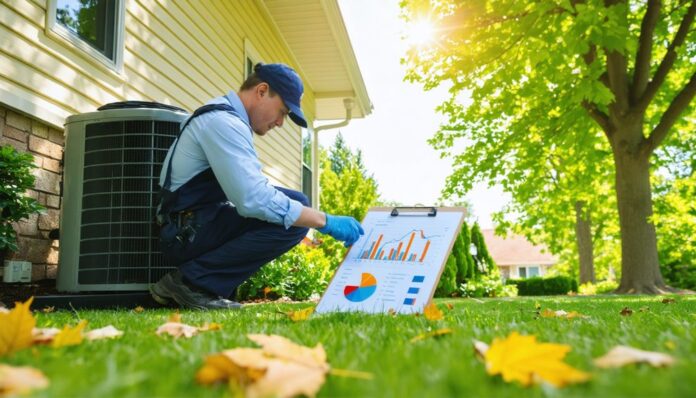Determining the ideal moment to replace an HVAC system can significantly affect both comfort and finances. Spring and fall often offer the best opportunities, as contractors are less busy and may offer discounts. This period also coincides with new model releases, potentially reducing prices on older units. Additionally, advancements in technology and available rebates can ease the financial burden while ensuring energy efficiency. How can homeowners maximize these benefits?
Assessing the Age and Condition of Your Current System
Determining whether it's time to replace an HVAC system often begins with assessing its age and condition. Typically, HVAC systems have a lifespan of 10 to 15 years. Beyond this timeframe, efficiency may decline, impacting the comfort of the home environment.
A community of homeowners often faces similar challenges, seeking reassurance in shared experiences and solutions. Regular maintenance records and repair history can highlight patterns of frequent breakdowns or costly repairs, signaling that replacement is wise.
Additionally, uneven temperatures and increased energy bills can indicate the system's diminishing performance. For those seeking a sense of security and communal belonging, consulting with trusted professionals and fellow homeowners can provide valuable insights into the necessity of upgrading to a more reliable, efficient system.
Understanding Seasonal Advantages for Replacement
Having evaluated the age and condition of an existing HVAC system, homeowners often turn their attention to the timing of its replacement. Understanding seasonal advantages can significantly impact cost and convenience.
Spring and fall are considered optimal times, as demand for HVAC services typically decreases. During these off-peak periods, contractors might offer discounts, and scheduling installations becomes more flexible. This strategic timing ensures homeowners avoid the discomfort of sweltering summer heat or biting winter cold.
Additionally, manufacturers may introduce new models during these seasons, potentially leading to price reductions on older inventory. By choosing to replace their HVAC system during these periods, homeowners not only secure financial savings but also become part of a savvy community that values smart, timely decisions.
Exploring Technological Advancements in HVAC Systems
As technological advancements continue to reshape the landscape of HVAC systems, homeowners are presented with a host of innovative options that promise enhanced efficiency and comfort.
Smart thermostats, for example, offer users precise control over their home environment, learning patterns over time to optimize energy use. Variable-speed compressors adjust output to match demand, reducing energy waste and providing consistent temperatures.
Enhanced filtration systems improve indoor air quality, a crucial factor for creating a healthy living space. Geothermal systems, though more niche, tap into renewable energy, offering sustainable heating and cooling solutions.
These advancements not only cater to the desire for a more connected and eco-friendly lifestyle but also foster a sense of community among those embracing sustainable innovations in their homes.
Evaluating Potential Cost Savings and Incentives
While technological innovations in HVAC systems offer impressive features, evaluating the financial implications becomes an important consideration for homeowners.
By considering potential cost savings and incentives, they can make informed decisions that align with their budget and community values. Energy-efficient models, though initially costly, often lead to significant long-term savings through reduced utility bills. Many local governments and utility companies provide rebates and tax credits, encouraging sustainable choices that resonate with environmentally conscious consumers.
Moreover, group purchasing schemes or neighborhood initiatives can foster a sense of camaraderie, offering collective savings on installations.
Homeowners should explore federal and state programs designed to ease financial burdens, thereby enabling a smoother transition to modern systems. Understanding these opportunities ensures they maximize benefits while maintaining financial stability.
Tips for Minimizing Expenses During the Transition
A few strategic actions can significantly reduce expenses when transitioning to a new HVAC system.
First, meticulous planning and timing can help homeowners avoid peak seasons when contractors are busiest and prices are highest. Scheduling installation during off-peak times fosters a sense of community and support, as contractors often have more availability and may offer discounts.
Additionally, obtaining multiple quotes ensures competitive pricing, allowing individuals to feel confident in their choice. Exploring energy-efficient options can also lead to long-term savings, creating a shared commitment to sustainability.
Lastly, reviewing available rebates and incentives can alleviate initial costs.
In Conclusion
In conclusion, replacing an HVAC system is optimally timed during spring or fall, leveraging lower demand for potential discounts and availability of new models. Assessing the system's age and condition is crucial, as is staying informed about technological advancements that enhance efficiency. By exploring cost-saving incentives and rebates, homeowners can mitigate financial impacts while enjoying long-term savings on energy bills. Strategic planning and awareness of market trends ensure a seamless transition to a more efficient and comfortable home environment.


